Facing the ever-evolving challenges of the restaurant business, the ability to predict and prepare for future events is not just an advantage – it's a necessity. This is where the art of restaurant forecasting comes into play, a critical tool that enables restaurateurs to navigate the complexities of their business with greater confidence and strategic insight.
Forecasting in the restaurant industry goes beyond mere guesswork; it involves a systematic analysis of past and present data to make informed predictions about future trends and events. Whether it's estimating the number of guests on a Friday night, determining the quantity of ingredients needed for the week, or projecting the annual revenue, effective forecasting touches every corner of restaurant operations.
The impact of accurate forecasting is profound. It ensures that the right amount of staff is scheduled, helps in maintaining the perfect balance of inventory, and aids in making informed financial decisions. In essence, it's about being prepared - whether for a sudden surge in customers, a shift in dining trends, or even an unexpected global event.
With forecasting, restaurant owners and managers can optimize their operations, reduce waste, enhance customer satisfaction, and ultimately, drive their business towards greater profitability and success.
In this comprehensive guide, we delve into the various facets of restaurant forecasting, exploring its different types, its significance, and how to implement effective forecasting strategies. Understanding and applying these principles can be a game-changer for your business.
What Is Forecasting for Restaurants?
Restaurant forecasting is a method that involves analyzing historical data, market trends, and current business metrics to make informed predictions about various aspects of restaurant operations. This process encompasses everything from estimating future restaurant sales and customer footfall to determining inventory needs and staffing requirements.
The essence of restaurant forecasting lies in its ability to transform raw data into actionable insights.
By examining past patterns in sales, customer behavior, and seasonal trends, restaurant managers can forecast future demand with a higher degree of accuracy. This predictive power is not just about reacting to upcoming trends; it's about proactively shaping business strategies to align with these anticipated changes.
Without forecasting, restaurants operate blindly, making it difficult to make necessary changes and adjustments.
However, even managers who look at their past sales volumes can miss important factors like the weather, local events, or gradual trends that are harder to spot. That is why is extremely important to get it right.
The Different Types of Restaurant Forecasting
It's important to recognize the diverse range of forecasting types that play a pivotal role in restaurant management. Each type offers unique insights and strategies for optimization. Let's explore these various forecasting methods and understand how they contribute to the overall success of a restaurant.
Sales Forecasting
Restaurant sales forecasting is the process of estimating future sales. By analyzing historical sales data, seasonality, local events, weather factors and more, restaurants can predict future sales volume, helping them predict revenue, manage inventory and staffing, guide financial planning and expansion, and thus enhance operational efficiency and profitability.
Utilize tools like Lineup.ai's AI-powered sales forecasting for accurate predictions. Its algorithm continuously learns and identifies patterns, improving the precision of future forecasts.
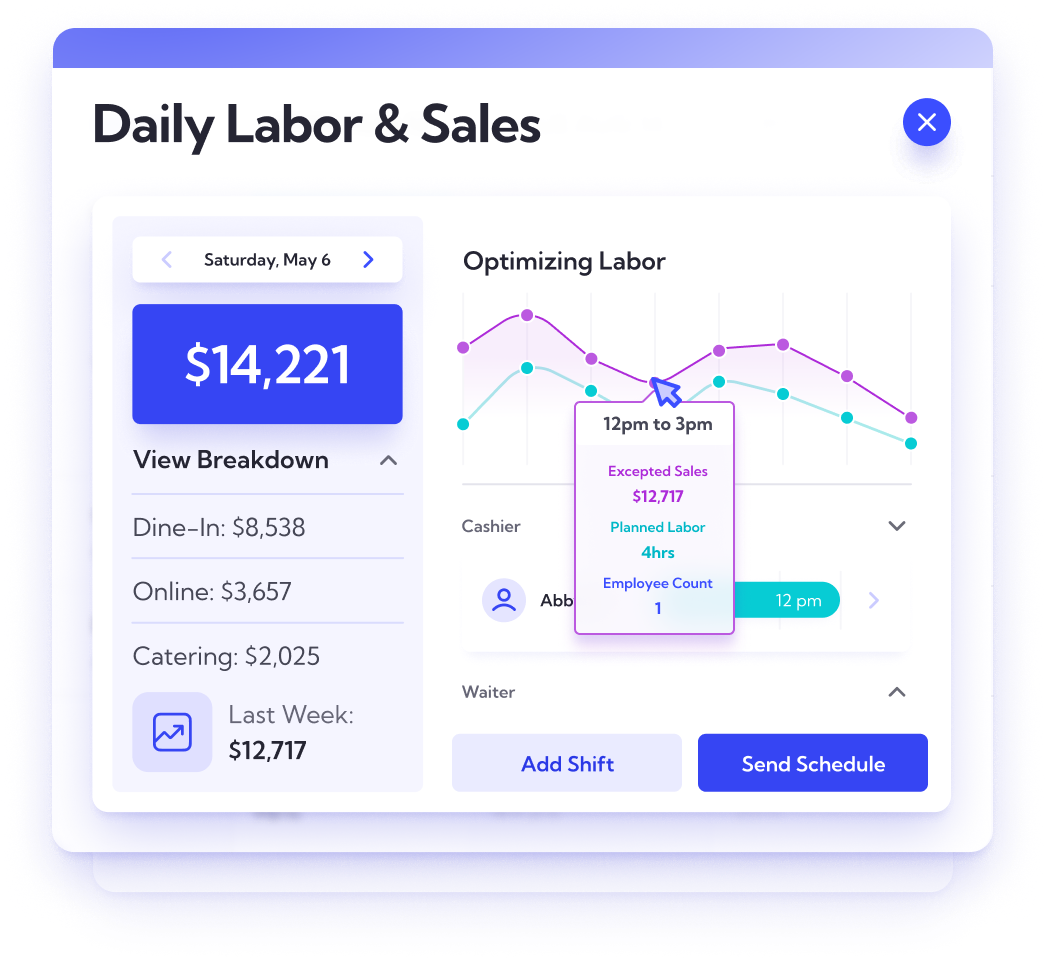
Customer Demand Forecasting
This type of forecasting predicts the number of customers expected to visit the restaurant. It's essential for managing customer flow and enhancing service quality. By anticipating busy times, restaurants can adjust staffing levels, optimize table turnover, and ensure they meet customer expectations without compromising on service.
Lineup.ai can automate demand forecasting, helping you schedule staff efficiently based on predicted customer volumes.
Inventory Forecasting
Inventory forecasting involves predicting the amount of food and supplies needed. Accurate forecasting helps in ordering the right quantity of ingredients, reducing food waste, and controlling costs. It ensures that the restaurant has enough stock to meet customer demand without over-purchasing, which can lead to spoilage and increased expenses.
Implement Lineup.ai to analyze past sales data and predict inventory needs, ensuring you have the right amount of stock. Contact us to find out more about this feature.
Labor Forecasting
Labor forecasting is about predicting the number of staff required to operate the restaurant efficiently. It helps in scheduling the right number of employees for each shift, ensuring that the restaurant is well-staffed during peak times and not overstaffed during slower periods. This balance is key to maintaining operational efficiency and controlling labor costs.
Use Lineup.ai's labor forecasting software for insights on staffing needs per location and shift, reducing under- or overstaffing.
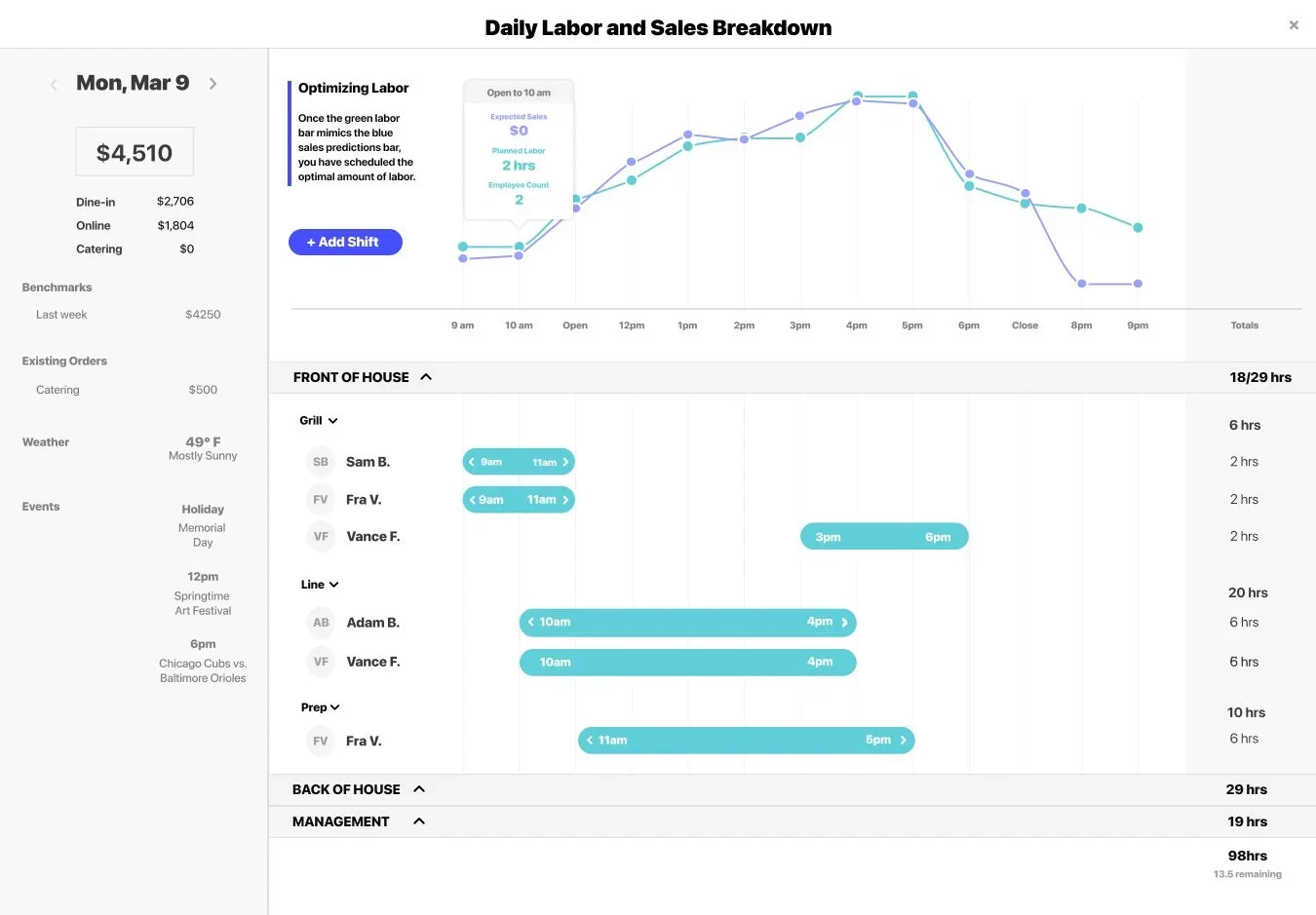
Menu Item Forecasting
This forecasting predicts the popularity of different menu items. Understanding which dishes are likely to be in high demand helps in menu planning and inventory control. It also aids in identifying less popular items that might be removed or improved, optimizing the menu for customer satisfaction and profitability.
Tools like Lineup.ai offer simple AI-powered menu forecasting features for restaurants, enabling precise demand prediction and inventory management to meet customer expectations, minimize waste, and control food costs effectively.
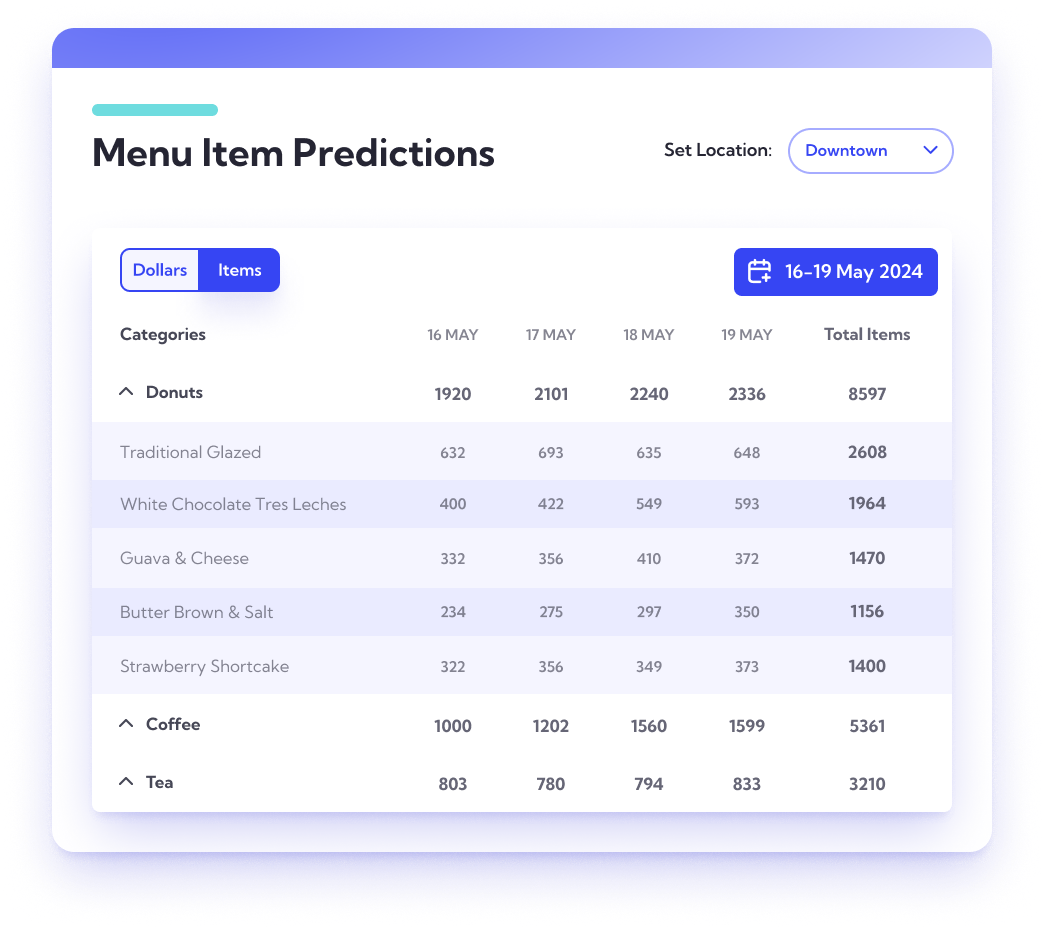
Financial Forecasting
Financial forecasting involves predicting the restaurant's overall financial performance, including revenue, expenses, and profit margins. This type of forecasting is vital for budgeting, financial planning, and making strategic decisions about investments and growth.
Trend Forecasting
Trend forecasting focuses on identifying broader market and consumer trends. It helps restaurants stay ahead of the curve by adapting to changing customer preferences, dietary trends, and industry innovations. This foresight is crucial for menu development, marketing strategies, and overall business positioning.
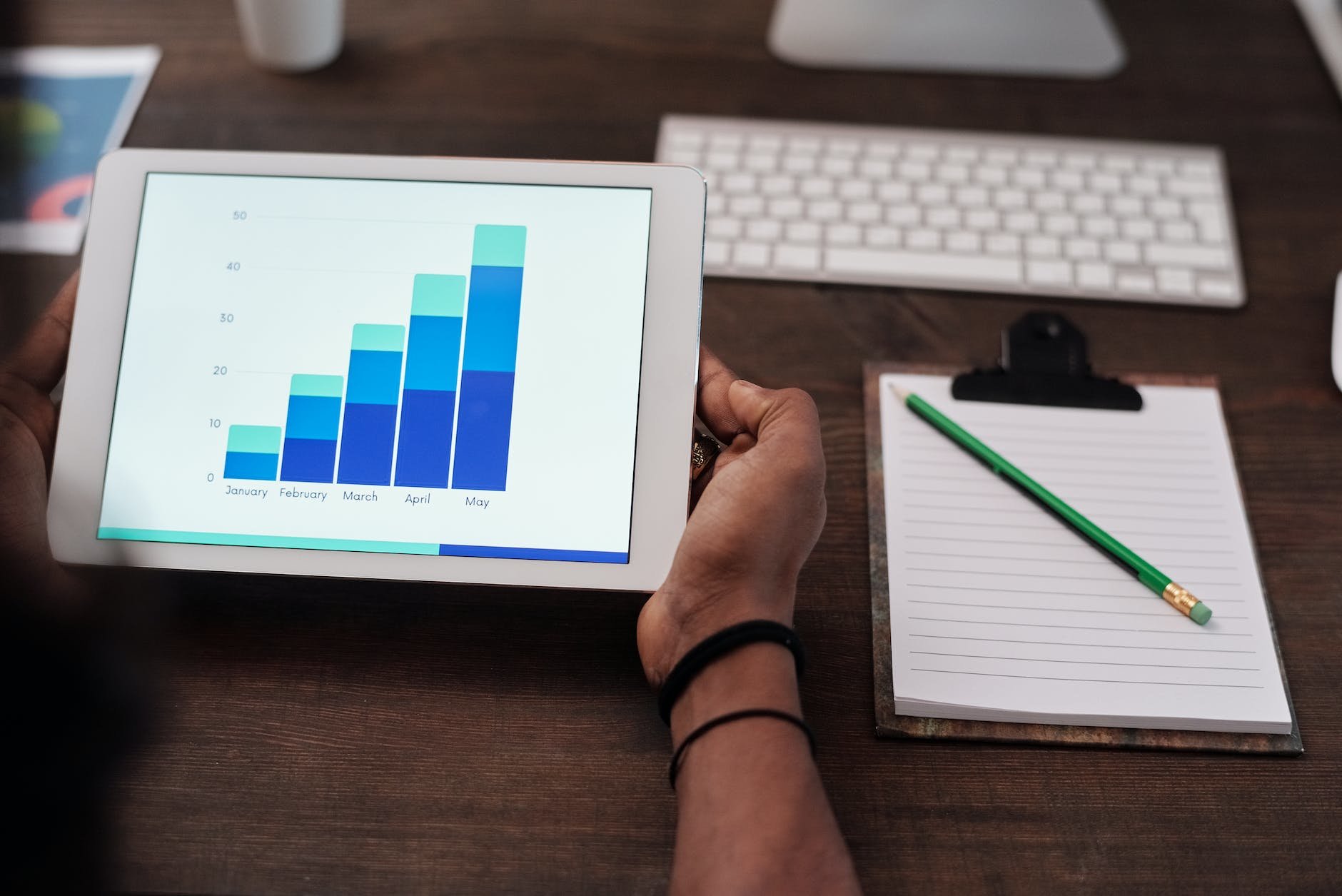
What Are the Two Components of Forecasting Restaurant Sales?
There are two components to forecasting restaurant sales:
- Looking at quantitative data. This means the use of information like past sales, customer counts, check averages.
- Looking at qualitative data. This includes information like customer surveys, weather reports, and event bookings.
Why Should You Conduct a Restaurant Forecast?
Restaurant forecasting is one of the most important responsibilities of a restaurateur.
Effectively analyzing restaurant data is a crucial element in making informed and intelligent decisions for your business. By delving into the analytics derived from your past sales reports, you gain valuable insights that can guide you in various aspects, such as staffing, inventory management, expansion strategies, and beyond. Let's explore some key areas where forecasting is important in the restaurant industry.
Enhanced Inventory Management
Forecasting can help you avoid over-ordering or under-ordering food and supplies. It gives restaurant owners and managers a clear picture of future sales, so they can order the correct amount of inventory.
Restaurant margins are often very tight, so you don’t have money to waste on spoilage or 86s. This is especially valuable if you’re planning to order costly ingredients for special menu items.
When your supplier has a great sale, check your forecast to see if it makes sense before you splurge on that extra inventory. After all, you don’t save any money if all the food you bought on sale ends up as spoilage.
Check out our free restaurant inventory sheet.
Easy Profit Estimation
You need to know how much you’ve already made, but it’s even more important to plan around the profit you’re likely to make in the future.
Fortunately, forecasting can help restaurants estimate their future profits. This information is crucial for planning investments, expansion, and other financial decisions that go above and beyond your daily operation costs.
This helps you avoid disasters like not having the cash in the bank to cover payroll. You can make more responsible decisions and manage your risks when you have a more accurate prediction of your profitability.
Informed planning
The heart of forecasting is the ability to plan for the future. Your forecast data can be used to make decisions about menu changes, staffing, marketing, or even your hours. For example, if you know that the next 6 weeks are going to be slow, you can optimize by closing between lunch and dinner or streamlining your lunch menu to reduce food waste.
In addition, forecasting can help restaurants plan for future seasons and events.
Imagine that you forecast that your sales will increase during the holiday season. This is the perfect time to hire additional staff and train them before the peak season starts and your trainees will affect service levels. Anticipating an increase in the number of employees and being able to plan for it can help you have a realistic outlook on sales and profits.
You know how to adjust your restaurant operations to volume needs. The key is to get your forecasts as accurate as possible before you start making those strategic decisions.
How Do You Create a Restaurant Forecast
Creating a restaurant forecast involves considering multiple factors, such as historical data, market trends, and business assumptions. While there isn't a one-size-fits-all formula for restaurant forecasting, here's a general outline of the steps involved:
Sales Forecast
Calculate the average sales for specific time periods (daily, weekly, monthly) based on historical data. Analyze any seasonal trends or fluctuations and adjust the forecast accordingly. Consider factors like special events, holidays, or promotions that might impact sales.
You can use our free sales forecast template for restaurants.
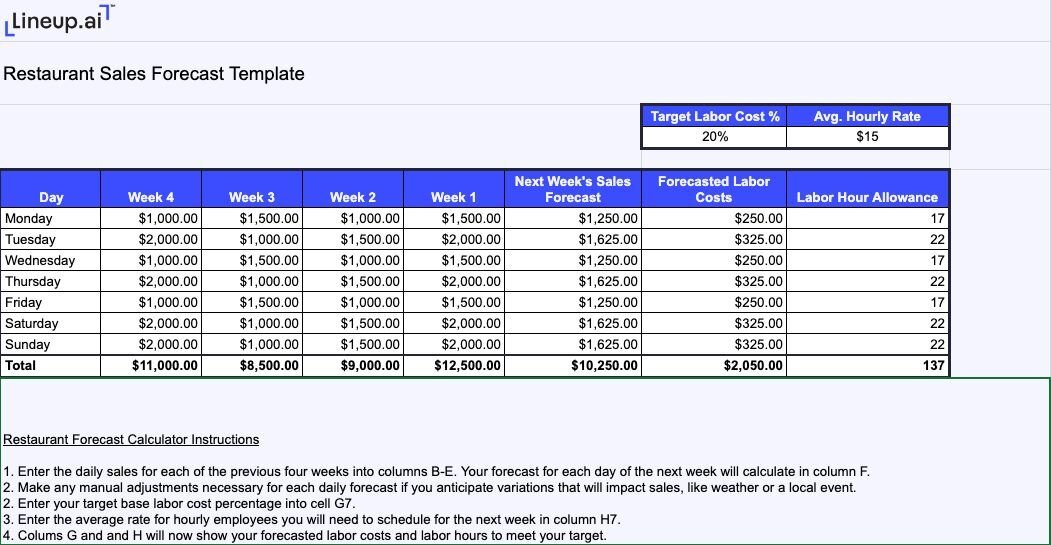
Cost Forecast
Estimate the cost of goods sold (COGS) for each menu item based on ingredient costs and portion sizes. Project other operating costs like labor, rent, utilities, marketing, and other overhead expenses. Consider any expected changes in costs due to inflation or other factors.
Check out our cost forecast calculator for restaurants.
Profit Forecast
Subtract the total forecasted costs from the forecasted sales to calculate the expected profit. Evaluate different scenarios to understand potential profit fluctuations.
Cash Flow Forecast
Analyze the timing of cash inflows (revenues) and cash outflows (expenses). Determine when revenue is expected to be received (e.g., immediate payment, credit sales) and when expenses must be paid. Ensure that the restaurant maintains a healthy cash flow to cover expenses and invest in growth. Learn about cash flow projection and use our free template.

Menu Engineering
Use menu engineering principles to identify high-profit items and forecast their potential impact on overall sales and profitability.
Market Research (Optional)
Gather data on market trends, customer preferences, and competitors' performance to inform your forecast.
Scenario Analysis (Optional)
Consider different scenarios and variables (e.g., best-case, worst-case, optimistic, conservative) to prepare for various outcomes.
Regular Review and Adjustment
Regularly review actual performance against forecasted figures. Adjust your forecasts and assumptions as new data becomes available or circumstances change.
Remember, the accuracy of your forecast will depend on the quality of data and assumptions used. Historical data and market insights will help improve the reliability of your forecasts, but it's crucial to be flexible and adaptive as the restaurant industry can be affected by unforeseen events and fluctuations.
When Is the Best Time To Implement Restaurant Forecasting?
Forecasting happens all the time. Every time you build your staffing schedule, plan your menu, or order supplies, you’re making a prediction about the future. Do you look at your metrics each time you do these things?
The easiest way to implement forecasting is to install specialized software to make it easier. Looking back at your POS data and actual sales takes too much time to be a practical way to operate. External variables like weather, neighborhood foot traffic, and local road closures might not even make it to the table for consideration, much less their fluctuations in real-time. You need a way to take those historical data into account without manually pulling reports. That’s where automation comes in.
The best time to install that software is as soon as you’re ready to cut out waste in your restaurant.

Tools To Automate Restaurant Forecast
There are two ways you can choose to automate your restaurant forecast.
1. Use Excel/Google Sheets
If you're looking for a more hands-on approach, you can create your own forecasting system.
This option may be more time-consuming, but it will allow you to customize the system to fit the specific needs of your restaurant.
There are a few things you'll need to consider when creating your system.
First, you'll need to decide what data you want to include in your forecast.
This may include sales data, customer data, and inventory data.
Next, you'll need to choose a forecasting method. There are a number of different methods you can use, including trend analysis, regression analysis, and time-series analysis.
Keep in mind that you’ll need to do this manually every time you place a supply order or create a schedule. If you’re good with formulas and like doing data analysis, this is fine.
Also, be aware that your forecasts will be about 35% less accurate than an AI-powered software because you are more likely to miss some of the external factors that affect your sales volumes.
Check out our restaurant sales forecasting template that is free to download.
2. Use a Software
Restaurant forecasting software is the fastest and most accurate way to handle restaurant data. Most good software options will also help you with staff management, saving more administrative time.
The downside to the software is that it usually has a monthly cost. However, this cost is generally low, and the money you save on spoilage and other waste can turn that investment into a higher profit margin for your restaurant.
There are a number of software programs that can be used to automate forecasting.
One popular option includes Lineup.ai.
Lineup.ai can be used to input data, create accurate sales, labor and demand forecasts, and generate reports.
It can also be customized to fit the specific needs of your restaurant regardless of location and order channel. Lineup.ai will combine your restaurant's historical data while at the same time considering real-time external factors such as weather and events to generate dynamic hourly, daily, and weekly sales forecasts. Learn more about Lineup's features.
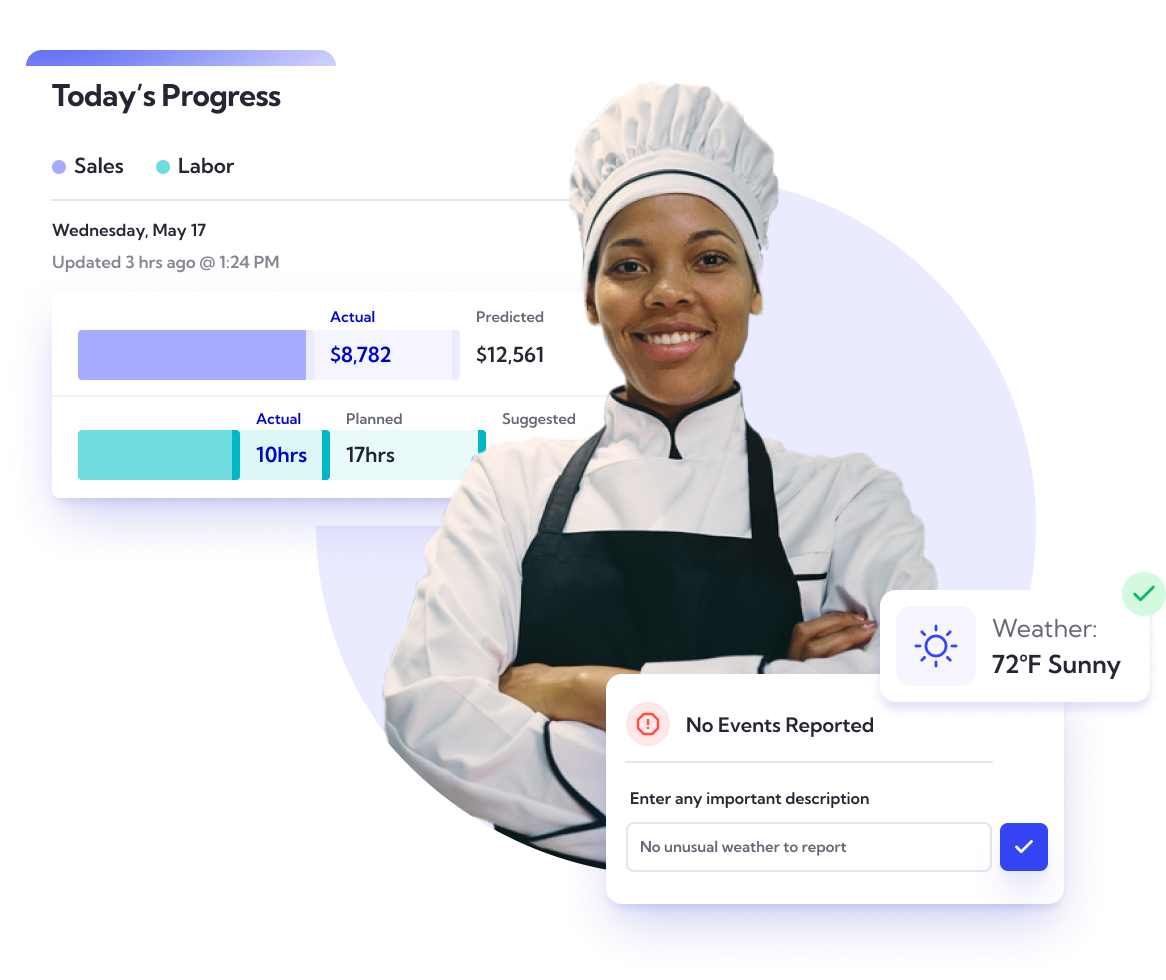
Bottom Line
Forecasting is an important tool for all restaurants, both new and established. It can help you set goals, make plans, and track progress. Perhaps most importantly, it enables you to make more money.
By following the steps in this guide, you can develop a realistic forecast for your business. And by automating your forecasting process with tools like lineup.ai, you can save time and make more accurate predictions.
FAQs
A restaurant is struggling to accurately staff for the different daily customer volumes. What to do?
To accurately staff for varying daily customer volumes, consider using restaurant forecasting software like Lineup.ai. This software uses advanced algorithms and historical data to predict restaurant labor and sales needs, helping you optimize schedules and reduce labor costs. Additionally, stay open to employee feedback, cross-train staff, and regularly monitor and adjust your staffing strategies to enhance efficiency.
A restaurant has noticed many popular dishes are running out early in the day. What to do?
Ensure you use historical data as a part of restaurant forecasting to predict popular dish demand accurately. Adjust your inventory and prep schedules accordingly to prevent running out early in the day.
A restaurant has noticed that customers often wait longer in line than in previous years, what to do?
Incorporate restaurant analytics software to optimize staffing levels, streamline kitchen operations, and reduce customer wait times in your restaurant.
What measures to take to get the appropriate cooks in to work as soon as possible?
To promptly address staffing needs in the kitchen, use real-time forecasting software like Lineup.ai, implement staffing alerts, cross-train staff, maintain flexible scheduling, ensure efficient communication, utilize kitchen technology, and monitor performance based on data and demand. These steps, combined with restaurant forecasting, enhance kitchen efficiency.
What are the slowest days at restaurants?
The slowest days at restaurants are typically Mondays and Tuesdays. The "post-weekend blues" and people generally settling into their workweek routines are common reasons cited for the reduced restaurant traffic during these days. It's a trend observed in many places, although there can be exceptions depending on the type of restaurant, local demographics, and marketing strategies.
What forecasting method does KFC use?
KFC uses a combination of methods, including historical data analysis, POS systems, market research, seasonal adjustments, and technology to forecast demand and manage operations effectively. The exact methods may vary by location and evolve with technology.
What forecasting techniques does McDonald's use?
McDonald's restaurants employ a blend of qualitative and quantitative forecasting techniques. Typically, they utilize customer data and sales statistics to predict the quantities needed to meet customer demand for their products and services.
How does Starbucks use forecasting?
Starbucks, like many other retailers, is increasingly leveraging predictive analytics and artificial intelligence (AI) to enhance its operations and provide a more personalized customer experience.

The team at Lineup.ai is composed of seasoned professionals who hold deep insights into the unique challenges and pain points of the restaurant industry, and are equally skilled in artificial intelligence, machine learning, and data analytics. This fusion of expertise enables Lineup.ai to create cutting-edge AI solutions specifically tailored for the restaurant sector. The technical and analytical prowess of the team, combined with a deep understanding of the unique challenges faced by restaurants, forms the cornerstone of the company's innovation. The team at Lineup.ai also excels in communicating the benefits and applications of AI and machine learning to businesses, ensuring clients fully leverage the capabilities of these solutions.
More about the author